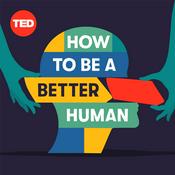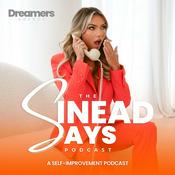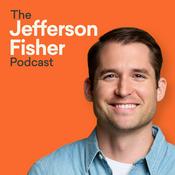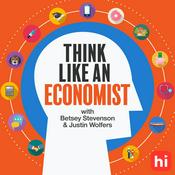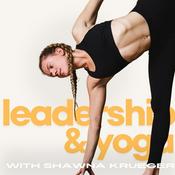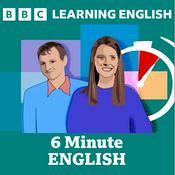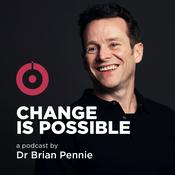Available Episodes
5 of 137
- Is There Really A Consensus On Aligners? A Delphi Author Explains| Orthodontics In Interview | VINCENZO D'ANTO“Even though the panelistswere huge aligner users, the statements are not so in favour of aligners, they are surprisingly reasonable.” “It’s very difficult to find a real aligner experts without a conflict of interest. Almost impossible.” “If you explain the differences honestly, most of my extraction patients choose fixed appliances. I’m not selling aligners.” “Direct printing is the real breakthrough, but right now it has too many shortcomings to be a standard technology.” “I am pessimistic. We must fight for our profession — against the idea that technology can replace orthodontists.” In this episode, I’m joined by Vincenzo D'Antò, lead author and contributing author of this year’s two major consensusstatements on clear aligners. We explore the key findings from these landmark papers and how they translate into real-world clinical practice. Vincenzo shares his own views on aligners, their limitations, and his pragmatic approach to integrating hybrid mechanics, particularly skeletal anchorage, into alignertreatment. We discuss recent innovations in aligner therapy, distinguishing those with genuine clinical value from those that are ineffective. We also hear Vincenzo’s candid concerns about the future of orthodontics. 03:00 – Why did youcreate this Delphi aligner consensus?05:03 – How were thealigner experts selected for the study?06:51 – Do conflictsof interest affect aligner consensus statements?11:49 – Crowding: Whydoes the Alharfi 2025 SR show better outcomes for aligners?15:49 – 7 vs 10 vs 14days: How often should patients change aligners?20:03 – Are complexmovement failures a design flaw or inherent to aligners?22:19 – What trulylimits clear aligner biomechanics?25:46 – Is hybridorthodontics the future of predictable aligner treatment?29:35 – What hybridmechanics do you use most in practice?32:05 – Can wereliably treat extraction cases with aligners?36:03 – Is betterOHRQoL worth compromised occlusal outcomes?39:11 – Do alignerswork for growing patients, or is this just marketing?41:34 – Why ishigh-quality aligner research still so weak?44:30 – Final advice:What should orthodontists focus on for the future? Click on the link below to view previous episodes, to refresh topics,pick up tricks and stay up to date. Please like and subscribe if you find it useful! Please visit the website for this interview podcast:https://orthoinsummary.com/is-there-really-a-consensus-on-aligners-a-delphi-author-explains-orthodontics-in-interview-vincenzo-danto/ Spotify podcasts for other platforms YouTubehttps://youtu.be/jpMUbYINxzg #OrthodonticsInSummary#VINCENZOD'ANTO#Orthodontics#ClearAligners#AlignerTherapy#HybridOrthodontics#SkeletalAnchorage#TADs#OrthodonticEvidence#OrthodonticsInInterview#FarooqAhmed#VincenzoDAnto#OrthodonticBiomechanics#OrthodonticResearch Farooq Ahmed🕒Timestamps of Key Questions & Answers--------47:25
- Retention, What Should We Do Now?Retention, What Should We Do Now? Join me for a update on retention, I explore a review of currentliterature and what the changes are recommended to our retention protocols,research of stability, critical look of retainerfailures and factors to consider in design and location of fixedretainers, as well as monitoring recommendations based on Clinical PracticeGuidelines. This podcast is based on recent literature as well as two excellentlectures from this year’s British Orthodontic Conference by Marie Cornelis(Australia) and Simon Littlewood (UK). Recommendations for the maxilla:· Low risk of relapse = Removable retainer (polyethyleneor polyurethane)· High risk of relapse = Dual retention with fixedand removable retainers· Fixed retainero 3-3 if occlusion allows, most likely 2-2 designunless high risk of canine relapseo Location slightly gingival due to occlusalforces and account for Increase in overbite with age (Littlewood) Recommendations for the mandible Lower archo Low risk of relapse = fixed retainerso High risk of relapse = dual archo Fixed retainer 3-3§ Position slightly incisal Mandible: slightlymore incisal, greater cleanability, less gingival inflammation – Petsos 2023 Monitoring regime· 1 month – fixed retainer (greatest timepoint offailure)· 3 month – removable retainer (motivation ofcompliance)· Every 3-4 months Wouters 2018· 1 year retention necessary Wouters 2018· Annual check-up Wouters 2018o Greater likelihood of compliance if annualcheck-upo General dentist Improve compliance· 2/3rds stop wearing after 4 years,All-Moghrabi 2018· Visual photo of relapse to patient and parentsincreased compliance Vs patient only or instructions only Lin 2015 (1.5Hrsgreater wear) Clinical PracticeGuideline For Orthodontic Retention Wouters 2019 (open access paper)--------14:11
- Dental Monitoring, Is It The Future Of Orthodontics? | Orthodontics In Interview | PHILIPPE SALAH“The purpose of Dental Monitoringisn’t to disconnect you from your patient, it’s to make sure you see them atthe right moment for the right reason.” “Fix problems early andyou don’t have problems. If you intercept an issue straight away, you can oftenavoid side effects altogether.” “If you don’t change yourprotocol, DM won’t reduce appointments, you do. The technology empowers smarterscheduling, not magic.” “AI isn’t replacingorthodontists. It’s replicating their eyes, helping you catch what you’d wantto see, every single week.” In this episode, I’m joined by PhilippeSalah, CEO and founder of DentalMonitoring. We explore the evolution of AI-based remote monitoring in orthodontics, how it aims to change the way we communicate with patients, provide data of our practice but also where the evidence remains mixed. Philippe addresses questions on reliability, patient compliance, and the impact on rapport when monitoring replaces in-personvisits. We discuss the real-world challenges of cost, protocol adaptation and workflow change, as well as the future role of AI, sustainability, and data-driven insight in clinical practice. 02:07 – How did youcome up with the concept of Dental Monitoring?08:50 – How accurateis Dental Monitoring, and what happens if the AI misses something?13:55 – Where do yousee the benefits of Dental Monitoring if studies show limited reduction invisits or treatment time?18:56 – Is remotemonitoring less able to build patient rapport compared to in-person officevisits?24:53 – DentalMonitoring comes at a financial cost, what is the return on investment forclinicians?29:48 – Is DentalMonitoring for every patient, given compliance and scanning challenges?33:02 – AI consumesglobal energy resources, how does Dental Monitoring address environmentalresponsibility?36:52 – Tell us aboutDental Monitoring Insights and how it impacts clinical practice.42:28 –What advicewould you give to orthodontists Click on the link below to view previous episodes, to refresh topics,pick up tricks and stay up to date.🕒Timestamps of Key Questions & Answers#OrthodonticsInSummary#DentalMonitoring#AIinOrthodontics#DigitalOrthodontics#RemoteMonitoring#OrthodonticInnovation#AlignerTechnology#OrthodonticEvidence#FutureOfOrthodontics#FarooqAhmedFarooq Ahmed--------44:42
- Will AI Change Orthodontics? | Orthodontics In Interview | JEAN-MARC RETROUVEY“Will AI it replace the orthodontist? No. Will it replace the bad orthodontist? Hopefully, yes.” “With AI, you could probably get prediction accuracy down to less than 10% , because it can analyze what the human brain cannot” “Computers are designed to crunch data. That’s all they do. The rest is up to you.” “AI is not going away. There are billions invested in this technology. You better get on with the program.” “Don’t drive your car inreverse… Don’t go backwards.” In this episode of Orthodontics in Interview,I’m joined by Jean-Marc Retrouvey, researcher and innovator in AI-drivenorthodontics. We explore the concept of the “virtual patient” and how artificial intelligence is reshaping orthodontic diagnosis, biomechanics, and aligner staging. Jean-Marc shares his candid thoughts on the pace of change inacademia versus industry, the role of AI in predictions within orthodontics, and how clinicians can embrace AI without losing their judgment. With insightsfrom his work in both universities and industry projects, Jean-Marc offers a compelling vision of how orthodontics will evolve in the AI-era. · 01:47 What isthe “virtual patient” concept?· 03:39 Wherewill AI impact clinicians, diagnosis vs outcomes?· 07:21 Can AIbe our biomechanics co-pilot?· 10:34 Why arealigner companies behind in AI?· 12:57 Whatpractical changes will AI bring to aligner staging?· 15:20 Why didyou say academia is too cautious for AI’s pace?· 19:24 Shouldorthodontic AI education come from industry, and is that biased?· 22:13 DoesRicketts’ 1983 “judgment over computers” still hold?· 25:13 Will AIreplace clinician experience and literature in EBP?· 30:44 Are weat risk of data overload with 3D/CBCT integration?· 35:01 How dowe use AI responsibly given its environmental costs?· 37:59 Why movefrom academia to industry, and what are you building at LuxCreo?· 41:11 Whitepapers vs peer-review: what’s the real difference?· 44:35 Your one piece of advice toorthodontists? Click on the link below to view previous episodes, to refresh topics,pick up tricks and stay up to date. Please like and subscribe if you find it useful! Please visit the website for this interview podcast:https://orthoinsummary.com/will-ai-change-orthodontics-orthodontics-in-interview-jean-marc-retrouvey/ Spotify podcasts for other platforms YouTubehttps://youtu.be/UDfDTtLZm4A #orthodontics #farooqahmed #jeanmarcretrouvey#AIorthodontics#clearalignertherapy #orthodonticsinsummary#orthodonticsininterview Farooq Ahmed🕒Timestamps of Key Questions & Answers--------47:58
- Aligners Algorithms and Autonomy |Orthodontics In Interview | Guy Deeming“The biggest variable with any clear aligner treatment is the patient themselves — not the plastic.” “We must remain the conductors of the orchestra, not the technicians of an algorithm.” “Aligners are not inferior to fixed appliances — but neither are they magic. The truth lies somewhere in between.” “Research often lags years behind reality, so we’re not judging today’s aligners with today’s evidence.” In this episode of Orthodontics in Summary,I’m joined by Guy Deeming, orthodontist, business leader, and Director of Professional Development at the British Orthodontic Society We dive into the reality of clear aligner therapy, discussing the recently published Delphi Consensus Statements and if theyagree with his clinical practice. Guy discusses compliance and where the orthodontist role has changed in the era of algorithms. Guy shares candid insights into alignerlimitations, clinical pearls for complex cases, and his vision for orthodontic education. · 01:12– Are aligners now the go-to appliance for mild to moderate crowding?· 03:22– Delphi consensus statement:What are aligners’ limitations?· 05:16– Why do clinical results differ so much from research findings?· 11:08– “no-go” cases for aligners?· 15:28– Extreme cases on social media: genuine progress or misleading?· 17:56– Are orthodontists just technicians of aligner companies’ algorithms?· 24:57– Profitability, corporate influence, and the in-house aligner movement.· 28:30– Extraction cases with aligners: realistic or flawed?· 32:52– Distalisation: predictable movement or just tipping?· 36:31– Should orthodontic training programmes include formal aligner training?· 44:50– Direct-to-print aligners: fad or the next revolution?· 48:08– Guy’s one piece of advice to orthodontists on approaching aligner therapy. Click on the link below to view previous episodes, to refresh topics, pick up tricks and stay up to date. Please like and subscribe if you find it useful! YouTubehttps://youtu.be/wITGxEw1ZNs #orthodontics #farooqahmed #guydeeming#aligners#clearalignertherapy #orthodonticsinsummary#orthodonticsininterview Farooq Ahmed--------50:43
More Education podcasts
Trending Education podcasts
About orthodontics In summary
Farooq brings the key points, references and understandings from keynote webinars and papers in a concise podcast.
Providing easy access to gain the most from our esteemed speakers and experts.
*Important to note the information is from our interpretation as individual professionals, and may incorporate our opinions*
Podcast websiteListen to orthodontics In summary, The Rich Roll Podcast and many other podcasts from around the world with the radio.net app

Get the free radio.net app
- Stations and podcasts to bookmark
- Stream via Wi-Fi or Bluetooth
- Supports Carplay & Android Auto
- Many other app features
Get the free radio.net app
- Stations and podcasts to bookmark
- Stream via Wi-Fi or Bluetooth
- Supports Carplay & Android Auto
- Many other app features


orthodontics In summary
Scan code,
download the app,
start listening.
download the app,
start listening.


